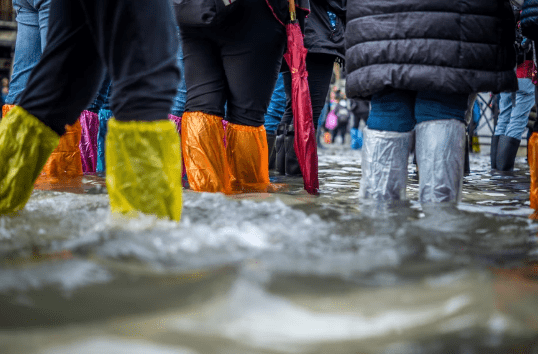Even if you believe you reside in a place with minimal risk of flooding, keep in mind that flooding can occur everywhere it rains. Just because you haven’t had a flood before doesn’t mean you won’t. Flood risk is determined by a variety of factors, including rainfall, geography, flood-control systems, river flow, tidal-surge statistics, and changes as a result of new buildings and development.
Whether a flood is caused by ground water, falling water, or a malfunctioning household water system, there are some best practices you should follow in the first 24 hours following a flood to ensure the protection of your house and family, as well as to negotiate the best insurance rates.
Avoid Additional Risks
If the water was severe enough to force you to flee your house, make sure you return safely. Before entering the house, look for evident structural damage such as warping, loosened or cracked foundation parts, fissures, and holes, in which case the water damage restoration service is there to help you. Also, notify utility providers if you suspect damage to water, gas, electricity, or sewage.
Even if the power is out, go to your fuse box and turn off the main, as well as all of the smaller fuse connections. You won’t have to worry about standing water and electricity once the power is restored.
Take pictures
Take photographs or videos of the damage to adequately record it for your insurer before removing any water or making any repairs. Digital versions are preferable since they can be quickly duplicated and saved electronically. You may reduce the breadth of your coverage if you begin draining water or performing repairs before photographing the damage.
Determine If You Are In a Disaster Zone
Property owners who live in a territory that has been declared a “disaster area” by government authorities have access to more resources, including public services, to safeguard and rehabilitate the area. You may also be eligible for financial aid. Your insurance company will be able to provide you with further information about this.
Take Care Of Your Health
Even though your home’s water seems to be pure, it may be polluted by sewage or household chemicals. Waders and hip or waist-high waterproof boots are recommended by experts. Wear rubber gloves as well to avoid contamination and to remove water-damaged items. Any food that has come into contact with flood waters should be thrown aside.
So, avoid drinking water until it has been certified as safe to drink and free of contaminants such as human waste, fuel, and other pollutants. Don’t brush your teeth with it. Don’t use it to prepare food, wash dishes, or even wash your hands with it. Water heaters that have not been damaged may provide a clean source of water to get you through.
If you don’t have access to safe drinking water, you should:
- Bring water to a boil:
Boil for one minute, then cool completely before storing in clean, tightly sealed containers. Most disease-causing bacteria will be destroyed by this method.
- Bleach:
Bleach will destroy certain germs, but not all of them. Use 1/8 teaspoon or eight drops of ordinary, unscented liquid home bleach per gallon. Allow 30 minutes for the water to sit before using it.
Call Your Insurance Company
Because you should inform your insurer as quickly as possible after a flood, it’s a good idea to include the phone numbers of your insurance company and local agent in your emergency kit.
Your agent may be preoccupied with his or her flood difficulties if an area or neighborhood has been flooded. In that situation, get in touch with the insurance company’s main office.
Because most homeowners’ insurance plans don’t cover groundwater flood damage, you’ll need to work with your insurer to identify the origin of the flood and the scope of your coverage. Inform your insurance representative of the condition of your home and any quick repairs you want to make. Always follow the insurance company’s instructions when it comes to whether or not to wait for an adjuster to assess the property before making repairs. At each stage of the procedure, keep track of the damage and talk.
When it comes to getting back to normal, how long can you anticipate it taking? It might take anything from one week to five to six months if you’re dealing with an insurance adjuster and a contractor to conduct substantial repairs.
Secure The Property
It is your job as the homeowner to secure the property to prevent further harm. Place boards over broken windows and cover the roof with a tarp if it has been damaged. Take photos to show the insurance company that you’ve done everything you can to keep your house safe from further damage.
Take care to protect yourself and your family if the house is livable. For example, use flashlights to navigate dark rooms. Don’t try to stay in a house that isn’t livable. Make your way to a shelter or another area. Check with your insurance carrier to see what arrangements they will make for temporary accommodation while your house is being restored.
Floods are uncommon, but when they do occur, they may be devastating. As a result, knowing what to use as first aid is important. These are only a handful of the most crucial things you should do. We hope you never find yourself in this unfortunate circumstance, but if you do, we think this information will be useful.


